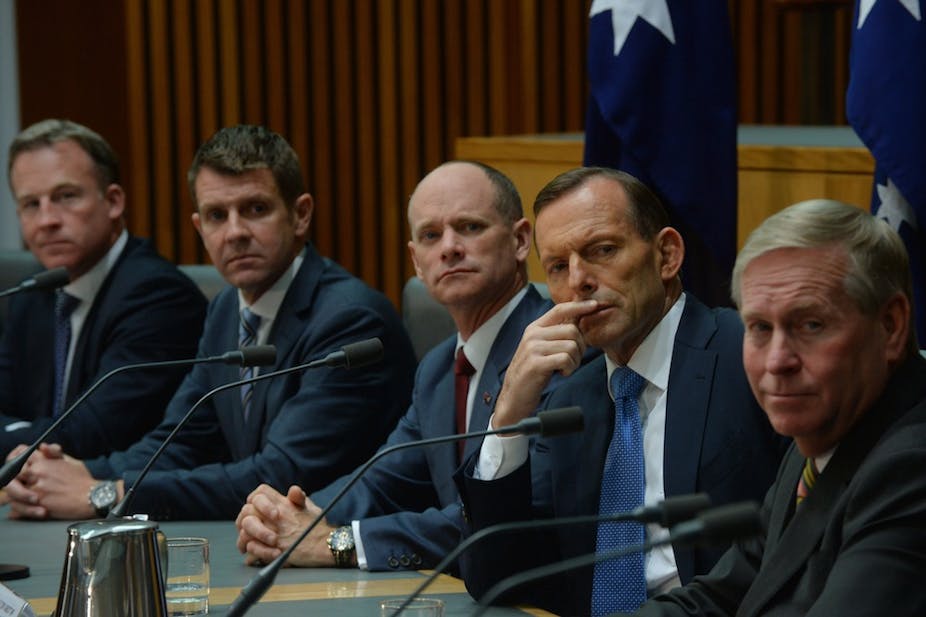The states have some justification in being annoyed about being stripped of $80 billion worth of federal funding for health and education funding. These programs were negotiated on the basis of shared costs, only to have Canberra unilaterally limit its commitment. It now leaves the states to deal with any funding shortfall and deal with the political problem of justifying the likely reduction of services that will result.
But cutting transfers to the states after a period of lavish federal spending has been standard practice for the federal government since the Fraser government had to limit the funding hemorrhage left by open-ended commitments by the Whitlam government. The Hawke and Howard governments followed the same script when the Commonwealth had financial problems.
This cycle of the rapid growth of Commonwealth expenditure in areas of state administrative responsibility followed by a painful — for the states — curtailing of federal transfers, is a symptom of a broader dysfunction. The Commonwealth has much wider scope for revenue raising, while the states are responsible for the great bulk of services that Australians expect of government.
The result is that many state activities are subsidised by transfers of federal funds, usually with strings attached. The current picture of self-funded and jointly funded government activities is beautifully set out in section 3.1 the Report of the National Commission of Audit.
The short version is that, apart from defence and foreign affairs, the function of the Commonwealth is to write cheques, while the states do everything else (note NCA chart 3.5).
There are some advantages in this arrangement, both financial and political. On the finance side, a uniform system of taxation for income and consumption taxes is easy to understand and simplifies the process of implementation for individuals and companies. From the standpoint of politics, the states get the benefit of revenue they don’t have to collect themselves, and the system of transfers enables the federal government to intervene in areas of settled state administration.
There is another benefit whenever the goods and service tax (GST) is raised. Although the Commonwealth likes to talk of the GST as a state tax — the states do indeed get all the revenue raised by the GST — it is, thanks to the baneful influence of the High Court, a Commonwealth tax.
This enables the Commonwealth to decide how the GST revenue is to be shared between the states, a decision suitably laundered by a ridiculously complicated formula administered by the Commonwealth Grants Commission. The formula is designed to transfer disproportionately more funds to the poorer states at the expense of the wealthier ones. This process of equalisation has both its defenders and its critics, but the strongest defenders are the smaller states with more limited own-source revenues.
As might be expected, the strongest critics are those states, particularly Western Australia, whose growth in own-source revenue is substantially negatively impacted by smaller transfers under the GST formula. But there are many economists who argue that the current system of equalisation is inefficient because it penalises growth. This is part of a wider argument against the Commonwealth monopoly control of income and consumption taxes, and its heavy involvement in state-delivered services.
These have the effect of limiting the ability of state governments to respond to the political preferences of their communities, and generally creating a spurious uniformity where there should be diversity and experimentation in the provision of health and education services, for which there is never a single best solution.
Federal budgets always bring these federal-state issues into play. On some issues, all states will feel that the federal government has reneged on previous agreements with the states, as is the case with the 2014 budget. On other issues, the states will be divided as is currently the case with the GST. Some would be willing to increase the rate of the GST if some conditions were met, and others, like South Australia and Tasmania, want no change in the rate or the formula for distribution because they are clear winners under the current system.
It is this kind of division among the states that has helped the Commonwealth to keep the system substantially unchanged since the 1980s. For those who would like major changes to the pattern of federal finance, including greater independent access by the states to major revenue sources, the Commonwealth’s response is likely to be — as it has been to the recommendations of the National Commission of Audit — yes, but not just at the moment.

